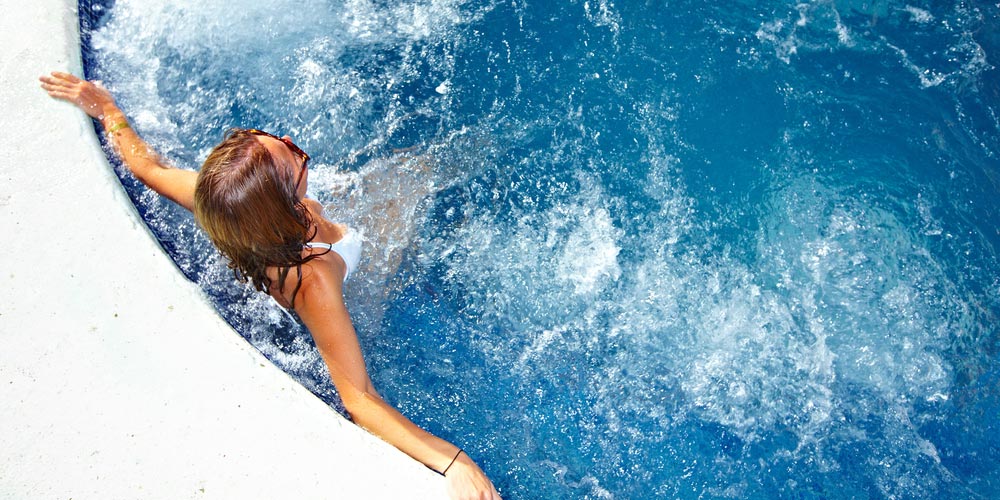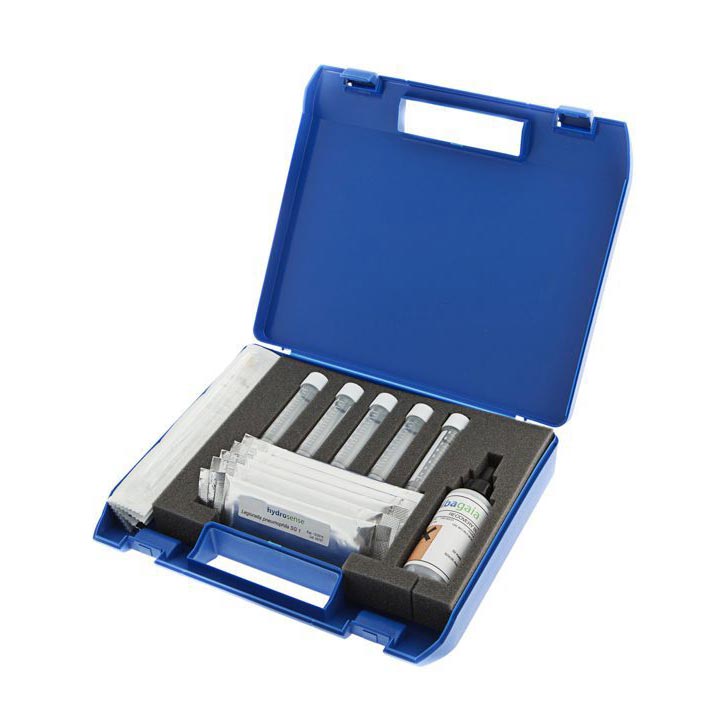
Legionella Testing For Spa Pools
Spa-pool systems, which include whirlpools and hot tubs, are a well-known source of disease for infections such as including Legionnaires’ disease, which is caused by Legionella pneumpohila. Hot tubs or spa pools are popular in gyms, hotels and increasingly in people’s back gardens. Hot tub sales in the UK are growing at more than 20% a year1and this popularity is resulting in many leisure and holiday rental properties installing spa pools too.
However, the UK’s favourite garden accessory can create serious health risks if they are not properly looked after. Outbreaks of Legionnaires’ disease have been linked to spa pools in leisure centres, hotels, holiday homes and cruise ships amongst others. A recent study, that investigated cases and outbreaks of Legionnaires’ disease in swimming pools and spa pools, has shown that from all reported cases of infection 43% were diagnosed with Legionnaires’ disease, and found a fatality rate of 6.3%.2
Factors Affecting Increased Legionella Risks Associated with Spa Pools.
- Temperature- Legionella bacteria require a temperature range of 20 degrees Celsius to 60 degrees Celsius to flourish and multiply. The water in hot tubs is kept at between 30 and 35 degrees, which provides the ideal temperatures for Legionella bacteria to grow.
- Design– The systems of filters, pumps and pipes used in spa pools are complex and have significant surface areas upon which biofilm may build up. Biofilm is an ideal breeding ground for Legionella and it will protect the bacteria from biocides. Therefore, these components need to be well-managed to ensure the purity of the water and reduction of bacteria levels. Testing of water quality and using chemical and microbiological monitoring is an essential part of any spa-pool treatment regime.
- Aerosol Generation: The aerosols produced by splashing and bubbling in a hot tub can throw contaminated water droplets contacting the bacteria into the air, and these can then float, sometimes over considerable distances. The study of Outbreaks of Legionnaires Disease Caused by Long‐Distance Spread suggests that in some cases Legionella can travel as far as 10 km3. As a result, you don’t even have to be sitting in the hot tub to inhale the bacteria, though an infected tub can create dramatic levels of exposure for those that do. Considering that the risk of acquiring Legionnaires’ disease can increase by 64% for every hour spent near the source of an outbreak 4, spa pools must be monitored and well-managed to reduce the risks of spreading Legionella.
- Microbiological hazards– Threats introduced from external sources such as weather, atmosphere, and surface surroundings can encourage the growth of Legionella. The risk increases further with the introduction of nutrients, which can include mucus, saliva, perspiration, dead skin, suntan lotion, spray tans, cosmetics, shampoo and soap residues, and faecal matter, and hair 5.
- Traditional Testing Methods – Duty holders responsible for spa pools management are often advised to send samples of water to a laboratory. This is a well-known, traditional method for Legionella testing, however, researchers have recently found some disturbing limitations of this technique.
Click Here To Find Out More About Limitations Of The Lab Culture Test
Remember that it is simply not enough to rely solely on the culture test. Doing so can lead to false negative results, underestimated counts of Legionella bacteria, slow decision making and delayed action – resulting in fines, reputational damage, illness and even fatalities.
How to manage the risk of Legionella in spa pools?
Because spa pools are considered high-risk areas they should be routinely analysed to ensure the effectiveness of the water management programme. Regular testing of TDS, disinfectant, chlorine, pH, ACC, coliforms, E coli, P aeruginosaand Legionellamust be carried out and proper records must be kept.
Traditional methods for Legionella testing can take 10-14 days to return the results. Considering the fact that Legionella pneumophilacan proliferate very rapidly, potentially doubling population within a mere 24 hours,6any action taken after 14 days of receiving a positive result, cannot protect those who are already infected. Even if the result received from the laboratory are negative, how sure can you be that the system is actually safe now it is 14 days later?
Using Rapid testing provides a solution to these problems. Innovative technology from Hydrosense offers an immediate answer on the need for corrective action. Why wait 14 days for the lab test results if you can get answers immediately, on-site? No training or experience is required to carry out the Hydrosense test. This means that now anyone can test the spa pool in their back garden.
The rapid test has a recovery rate of 80% compared with a variable rate of 10-80% for a lab test (‘recovery rate’ refers to the frequency with which a test can detect a positive sample). It also detects the motile form of bacteria which is the most dangerous to humans but cannot be cultured in the laboratory. The Hydrosense test is very sensitive (100CFU/L) and is as simple to read as a pregnancy test – one line signifies a negative result and two lines indicate a positive result. This means that receiving a positive result from Hydrosense test is a call to action and should result in reviewing control measures and carrying out remedial actions
Legionella – Don’t Risk It. Test It.
Find Out What The HSE Says About Legionella Testing in Spa Pools
Recommended Kits
Our Single Syringe Test Kit is both flexible and sensitive – it allows for sample collection from any water source and has an excellent Limit of Detection of 100 CFU/L.
Biofilm is often an issue in spas, pools and fountains. To check that surfaces are not harbouring Legionella in the biofilm, use the Swab Test Kit.
References
- Slater A. (2016) Hot tub retailers targeting record totals, Hot tub retailer, online, available at http://www.hottubretailer.co.uk/2016/03/hot-tub-retailers-targeting-record-totals/[Accessed 04 Oct 2018]
- Leoni E., Catalani F., Marini S., Dallolio L. (2018) Legionellosis Associated with Recreational Waters: A Systematic Review of Cases and Outbreaks in Swimming Pools, Spa Pools, and Similar Environments. International Journal of Environmental Research and Public Health, online. Available at https://www.ncbi.nlm.nih.gov/pubmed/30061526[Accessed 11 Oct 2018]
- Karin Nygård, Øyvind Werner-Johansen, Svein Rønsen, Dominique A. Caugant, Øystein Simonsen, Anita Kanestrøm, Eirik Ask, Jetmund Ringstad, Rune Ødegård, Tore Jensen, Truls Krogh, E. Arne Høiby, Eivind Ragnhildstveit, Ingeborg S. Aaberge, Preben Aavitsland (2008) An Outbreak of Legionnaires Disease Caused by Long‐Distance Spread from an Industrial Air Scrubber in Sarpsborg, Norway, Clinical Infectious Diseases, Volume 46, Issue 1, 1 Pages 61–69,[ Available at https://doi.org/10.1086/524016[Accessed 03 Oct 2018]
- World Health Organization. (2018). Legionellosis. [online] Available at: http://www.who.int/news-room/fact-sheets/detail/legionellosis [Accessed 3 Oct. 2018].
- Megji S. (2017) The hidden dangers of spa pools, Health and Safety at work. Online, Available at https://www.healthandsafetyatwork.com/legionnaires/hidden-dangers-spa-pools[Accessed 04 Oct 2018]
- Y. Buse and N.J. Ashbolt (2011) Differential growth of Legionella pneumophila strains within a range of amoebae at various temperatures associated with in-premise plumbing. National Exposure Research Laboratory, Office of Research and Development, US Environmental Protection Agency, Cincinnati, OH, USA. Letters in Applied Microbiology 53, 217–224. Available at: https://onlinelibrary.wiley.com/doi/pdf/10.1111/j.1472-765X.2011.03094.x


